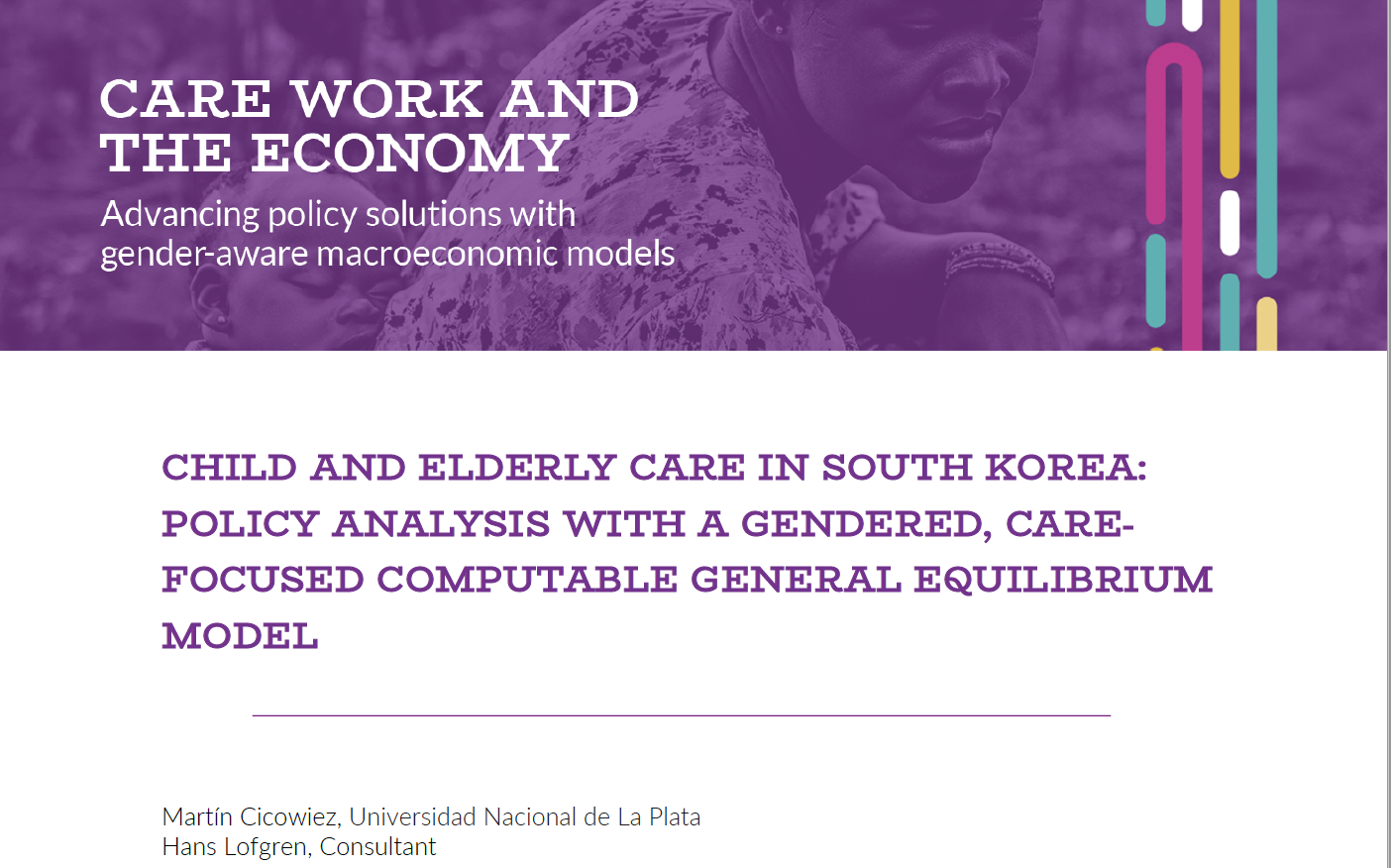ABOUT GENDER AWARE APPLIED MODELING
The Gender-Aware Applied Modelling Working Group develops country-specific macroeconomic tools that integrate care and gendered dynamics both in labor markets and within households, including interactions between paid and unpaid care work and private and public care provisioning. A fine level of detail is provided for sectors, factors of production (such as labor) and household types with the specific aim of highlighting the gendered structure of an economy. This modelling approach allows one to assess the full range of gender distributional effects that might result from a variety of economic and social policies as well as their fiscal sustainability. These sorts of assessments are crucial for enabling policymakers to effectively respond to the challenges posed by demographic and technological changes in the context of the 2030 Agenda for Sustainable Development. Policy questions that will be answered include, among others: What sort of fiscal policies (public spending and/or taxation) are likely to be most effective at reducing gender gaps in paid employment? What form of public investment can best contribute to reduce and redistribute unpaid work both across genders and socio-economic groups? This modelling approach will first be applied to South Korea. This will involve constructing a detailed gender-aware Social Accounting Matrix, drawing on findings estimated by the Understanding and Measuring Care Cluster as well as estimations from a number of Korean nationally representative surveys, and use it to calibrate a new variant of the MAMS (Maquette for MDG simulations) model. The initial policy focus will be on expansion of both childcare and care provision for the elderly but could be later extended to simulation of other government policies and even trade policies.



